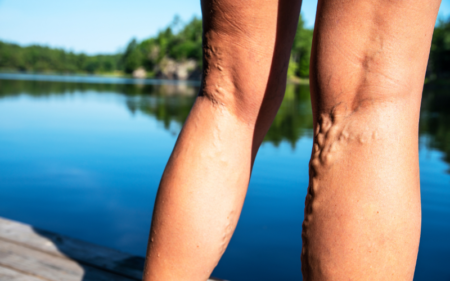
Do you want to get rid of your varicose veins? Pain and embarrassment can result from bulging veins in your legs. The good news - treatment options are available. These procedures are fast and effective.
Varicose veins are swollen and twisted blood vessels. These damaged veins are often in the legs, feet, or ankles. Not all varicose veins are visible. Yet, those closest to the skin's surface usually have a bluish-purple color.
Unfortunately, 23% of American adults daily deal with varicose veins. Untreated venous insufficiency can progress to ulcers in the veins. Venous ulcers account for millions of lost workdays and $3 billion annually.
Varicose veins can affect anybody. Weak vein walls and increased vascular pressure cause these rope-like veins on the legs. Hormonal changes, lifestyle choices, and genetics are common causes.
Some varicose veins are visible from the skin's surface, but others are not. It's important to have a specialist evaluate the seriousness of your varicose veins. Often no treatment is needed, but without professional advice, there's no way of knowing.
Veins and valves can weaken or become damaged. These damaged veins contribute to pooling and reflux. Blood pooling causes valvular enlargement and distortion, while reflux causes the blood to move in the wrong direction.
Since varicose veins are not always visible, knowing the symptoms is helpful.
Many people think varicose veins are merely a cosmetic issue. This misconception needs to be clarified. Varicose veins are symptoms of an underlying circulatory problem. If untreated, varicose veins can cause the following health problems.
It’s important to remember that bleeding from varicose veins is a MEDICAL EMERGENCY. If you notice this, call 9-1-1.
Anyone can develop varicose veins, yet some people are at greater risk. Factors that increase your risk of developing varicose veins include:
Varicose veins can cause short and long-term physical and psychological complications. People who have this condition are more likely to have a blood clot.
Do you feel embarrassed to wear a dress or shorts? Varicose veins can affect how you feel about yourself. Interestingly, many people wouldn't think twice about coloring their hair or having dental work done.
Yet, for some reason, we are ashamed to have vein repairs done for cosmetic reasons. It's normal and OK to want to get rid of unwanted varicose veins so you can feel good in that chic, black dress.
Vein specialists use an ultrasound to determine vein function. Compression therapy and pain medications are often the only necessary treatment, especially during pregnancy.
However, laser ablation and sclerotherapy are outpatient procedures producing phenomenal results. Surgery, ligation, or other treatments are recommended when ablation or sclerotherapy is not an option.
Laser ablation is a minimally invasive procedure performed in the office. Your vein specialist closes off the damaged vein using an ultrasound-guided catheter. This long, thin tube delivers heat to the damaged vein, closing it. Blood is then rerouted to healthier veins which results in improved circulation.
Laser ablation provides quick, efficient treatment without harsh side effects and requires only local anesthesia. After the procedure, you can resume normal activities with few restrictions, making this procedure effective and reliable.
People who have medium to large varicose veins are ideal candidates. Laser ablation is also used for varicose veins that are not visible.
While sclerotherapy is also used to treat varicose veins as an outpatient, how this procedure works differs from laser ablation.
With sclerotherapy, a solution is injected into the veins, which causes the vein walls to collapse. Like ablation, sclerotherapy reroutes blood flow to healthy vessels. Closing off the varicose vein improves circulation.
Sclerotherapy is an option for people with small to medium-sized varicose or spider veins.
Both laser ablation and sclerotherapy are highly effective at treating damaged vessels without scarring. Most people see improvements within a few weeks.
According to a study by the American Society for Dermatologic Surgery, 94.5% of patients experienced significant improvement after both treatment methods.
Once you review your vein treatment plan with your Center for Vein Restoration (CVR) physician and staff, you may begin your path to healing.
Speak to your CVR vein specialist about the differences in recovery time between the two procedures. However, both treatments allow you to continue your normal routine.
Eating fiber-rich foods and maintaining a healthy weight decreases pressure within the vessels. Physical activity increases circulation and prevents blood pooling. Avoid standing or sitting for long periods.
Compression therapy uses elastic stockings that place gentle pressure on the legs. This helps prevent swelling, pain, and reflux.
Treating varicose veins is important. It keeps problems from worsening, eliminates painful veins, prevents future complications, and improves confidence.
Sclerotherapy and laser ablation are two effective treatment options for this condition, which can become problematic if not properly diagnosed and treated. Request a consultation today if you are curious about treatment options for your varicose veins.
Here at Center for Vein Restoration, we offer comprehensive, compassionate treatment for varicose veins, for more information give us a call at 240-965-3915 and come see us at one of our many locations.